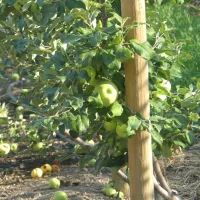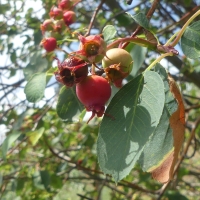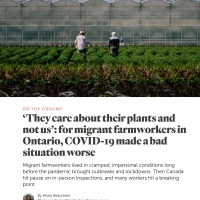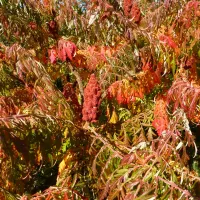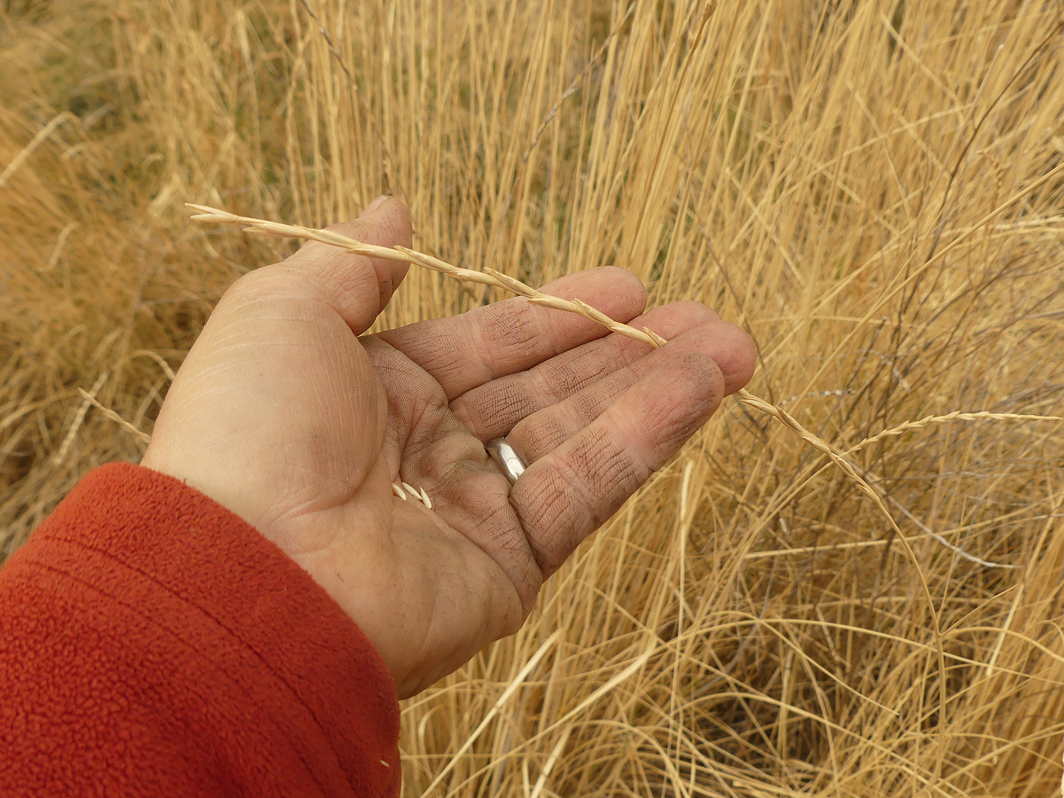Terroir is an ancient wine-making term that defines a wine by the soil and sun exposure on which it is grown. Surprisingly, it is contentious. Beats me why.
 Terroir for All to See
Terroir for All to See
The Rise Vineyard, from below. Top soil, as you can see, is in short supply, but gravel is everywhere. In Naramata to the south, such a soil profile might show 100 metres of clay.
The arguments against terroir, and they are legion, such as those here and here, miss the point that each berry has a history, altered not only by the number of days of sun it received but by when it was pollinated, the year’s patterns of water and weather, how old its vines were, the day it was picked, how long it sat on its skins, how hard it was pressed, and at what temperature, and with which yeast, it was fermented, and the relationship between all that and the soil on which the vines were grown. Everything matters. Because little of this has been scientifically studied, wine-making remains an art — which means that a gifted winemaker can work at a level of complexity exceeding that of contemporary science. He or she just can’t say how. I love that. I hope the scientists work hard to catch up. We would all learn so much.
 Old Glacial River Bed, Running Along the Ice at the Shoreline of Glacial Lake Penticton, 10,000 Years Ago
Old Glacial River Bed, Running Along the Ice at the Shoreline of Glacial Lake Penticton, 10,000 Years Ago
The Okanagan Landing Terroir differs for pretty much every vine grown on it. Here the chemistry and flow of water is a complex business indeed.
If there was no terroir, and nothing about wine that is not yet understood by science, Gewürztraminirs from Alsace would taste the same as ones from Yakima, Washington or Okanagan Centre, British Columbia, but they don’t. In fact, they’re scarcely recognizable. As for soil, it’s no simple thing. Just feet away from the soil in the previous photograph, there’s this:
 A Calm Eddy in the Glacial River
A Calm Eddy in the Glacial River
Little gravel here, but lots of fine, water-retaining silts. If soil didn’t matter in complex and as yet poorly understood ways, a tomato grown in perlite and water in a greenhouse would taste the same as one grown on compost in a vegetable garden. They don’t. And that is one of the beautiful things about living on this planet. What a place!
So much soil is being devoted to wine in the Okanagan, and so much wine is made to fit the taste descriptions of a rather mechanical taste-classification method. A wine can taste like black currants or chocolate or leather or mango or limes, but not like a grape that has been grown on a particular slope, in a particular season, and pressed and vinted in a particular way through a particular winter?
Let’s be all that we can imagine.
Categories: Agriculture, Arts, Land, Water, Wine


